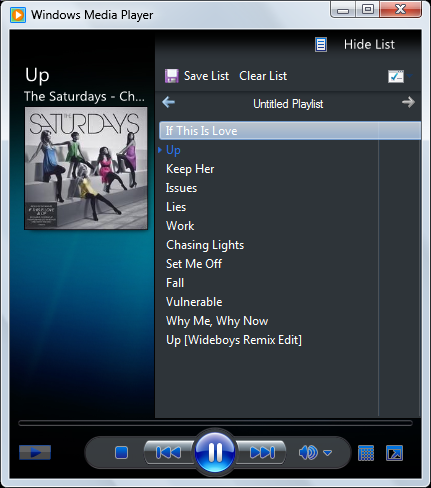Amazing alongside with Windows Media Player 12

Despite the fact that some applets will be excluded from the delivery of Windows 7, Windows Media Player will remain part of the operating system, though it will be updated to version 12. Fortunately, while this number is not a hell of a dozen, the new version of the player is endowed with some new features.
The program interface itself has become lighter and brighter than its predecessor. Some controls have been moved to another location, but in general the interface should be familiar to users of the 11th version of the media player. One of the most notable changes is the rejection of the “Now playing” button, which previously transferred the user to the current playlist.

This change was made in connection with an attempt to completely separate the management of the library and the currently playing compositions. All this resulted in the appearance of two separate modes: “Now Playing View” (“Playing”) and “Library View” (“Library”). The library management mode contains all the features familiar to users of the 11th version of the player, and the Now Playing View contains a playlist, visualizations, and videos.
')

Library view mode (click on image to enlarge)
The video viewing mode has become minimalistic and, in fact, is only a window with content.

However, the first impression can be deceptive: the video controls remain in place.

The content control panel (that video, that audio), as you can see, has practically not changed, but the playlist itself has undergone minor cosmetic changes. The playlist control buttons (saving and cleaning) are brought to the forefront.

You can now look at the covers while enjoying the visualization.

Also, Windows Media Player 12 supports mini-preview right from the Windows 7 taskbar.

Jump List player support is also associated with this task pane. Looking at him, it seems that Windows Media Player is trying to guess all the possible jumps of the user in order to catch him in the right place.

In addition to dividing the player into two modes, the rest works in the same way as in the predecessor. Of course, the developers added some small improvements, such as automatically listening to a song (when you hover over the song, its first 15 seconds are played). The library is now able to display all types of media, and not each individually, as it was before.

The main drawback of many media players, and Windows Media Player is no exception, is the lack of the right set of codecs right out of the box. Of course, the Windows media player can download the necessary codecs over the network itself, but this is the least it has to offer. Now the player supports H.264, AAC, Xvid and DivX in addition to the support of MPEG2, WMV, MP3 and other formats existing from version 11. Support for these formats will make the 12 version of the player able to play the most media on the Internet right out of the box.
Another area that was developed in detail in the new version is the work on network protocols. With the previous version of the player, the user could view libraries of other users of the local network (if they also use Windows Media Player). The new version will be able to browse not only the Windows Media Player libraries, but also the iTunes player, and with H.264 and AAC support, and quietly play most of the media for iTunes. Yes, it is “the majority”, because Apple will never license FairPlay DRM to third parties, therefore Windows Media Player will not be able to play DRM protected iTunes Store media.
In addition to improving the library, the new version works more confidently with audio and video on remote devices (the new feature is called “Play To”: it can send streams to other computers in your home group. Thus, you can view your library on a laptop that is on actually connected htpc connected to your sound system.

In addition to supporting streaming to remote PCs, the player also supports the Digital Living Network Alliance v1.5 (DLNA) device management. Such network devices have the ability to play audio and / or video. So, in addition to supporting HTPC, you can work with Sonox , for example. Each such device has its own playlist and playback settings; they can be controlled from a small window.

If the device does not support the stream format, it will be converted to understandable device on the fly.
Although the 12 version of the player is very similar to the 11, it nevertheless contains something new. Instead of ignoring the success of iTunes and denying the existence of media formats that were not developed by Microsoft, Microsoft decided to recognize this reality and tried to do everything to make it as convenient for the user to work with the player. This position provides us with an opportunity to assess changes in Microsoft policy, its fresh look at some things that were previously done in a completely different way. As a result - improved Windows Media Player. Such Microsoft steps are useful for both the consumer and the corporation itself. The main thing - do not stop there. We wish them good luck.
Source: https://habr.com/ru/post/43796/
All Articles